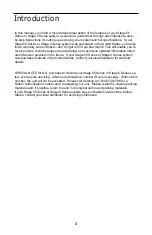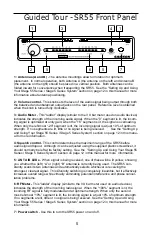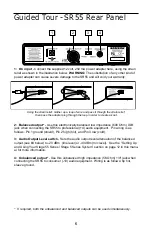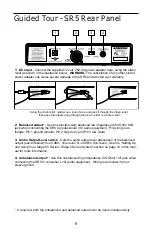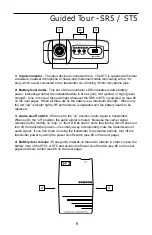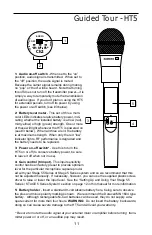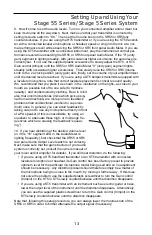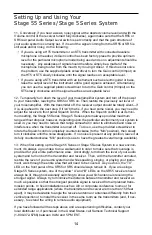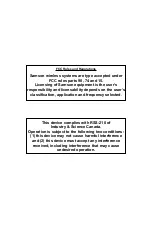
3
Introduction
Congratulations on purchasing the Samson Stage 55 Series or Stage 5 Series Wireless
System! Although this product is designed for easy operation, we suggest you first take
some time to go through these pages so you can fully understand how we’ve implemented
a number of unique features.
Every wireless system consists of at least two components—a transmitter and a receiver,
both of which must be tuned to the same channel (that is, the same radio frequency) in
order to operate correctly.* The Samson Stage 55 Series or Stage 5 Series system you
have purchased operates in the 174.6 - 213.2 MHz frequency range and contains either a
SR55 or SR5 receiver as well as one of the following transmitters: a ST5 belt-pack
transmitter (for lavaliere microphone or headset applications); a ST5 belt-pack transmitter
(for instrument applications); or a HT5 hand-held microphone transmitter. For convenience
and security, the Stage 55 Series and Stage 5 Series system is packaged in a custom
impact-resistant polypropylene plastic carrying case that provides room for all components
(see Appendix B for more information).
The ST5L beltpack transmitter provides a locking 3.5 mm mini-phone jack for connection to
the various Stage series transmitters including:
LM5 - Lavaliere condenser microphone
HS5 - Headset condenser microphone
GC5 - Heavy-duty Guitar/Instrument cable
The HT5 hand-held microphone transmitter is equipped with the Samson Q7 neodymium
dynamic microphone element.
* Your receiver and transmitter have been factory preset to utilize the same channel.
The SR5 receiver provided with the STAGE 5 Series wireless system utilizes non-diversity
technology, incorporating a single antenna for ease of use and minimal cost. The SR55
receiver provided with the Stage 55 Series system utilizes an advanced technology
called “Diversity,” whereby a single chassis houses two antennas (called “Antenna A” and
“Antenna B”) and a receiver circuit. An advanced circuit design continuously scans RF sig-
nals from the two antennas and determines which one has the clearest and strongest
reception, automatically (and silently) switching that signal to the receiver. This allows you
to maintain the wireless communication link over a much broader area range than would be
allowed by a receiver utilizing a single antenna and also virtually eliminates multipath
dropouts, interference and phase cancellation problems. In addition, special sample-and-
hold linking circuitry ensures that correct phase correlation is maintained at all times, with
no noise or pops during antenna switching. The result is performance which exceeds that
of conventional non-diversity systems and the highest quality audio fidelity available in any
wireless system. Finally, the provision of a noise reduction circuit produces crystal-clear
sound with minimized background noise and hiss.




